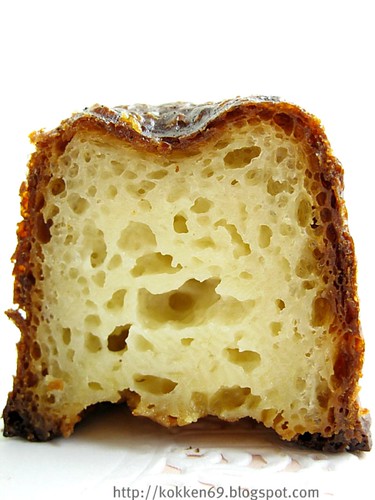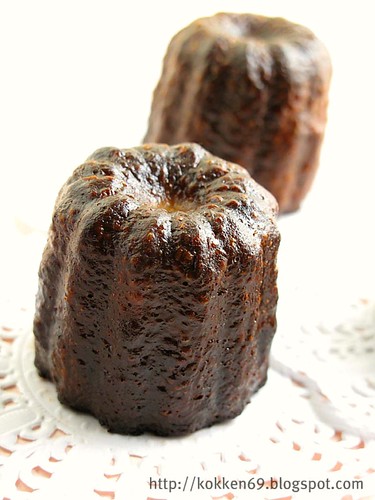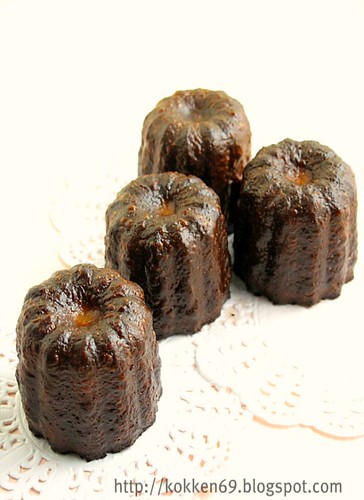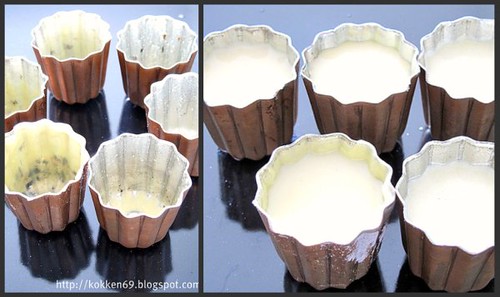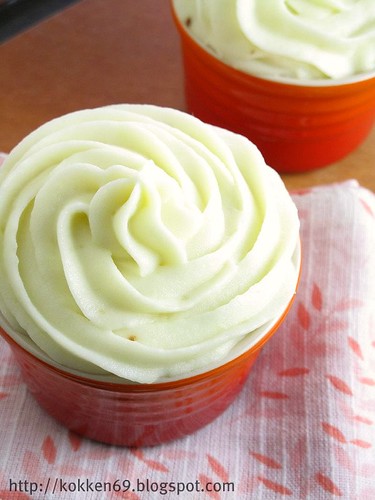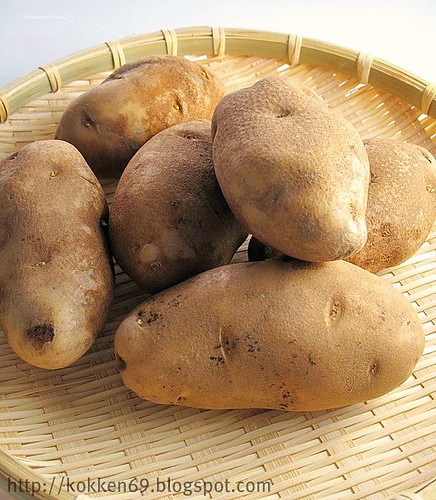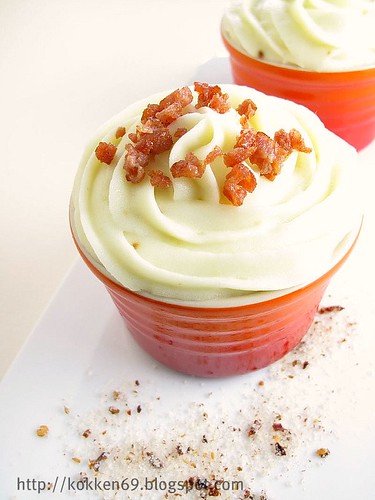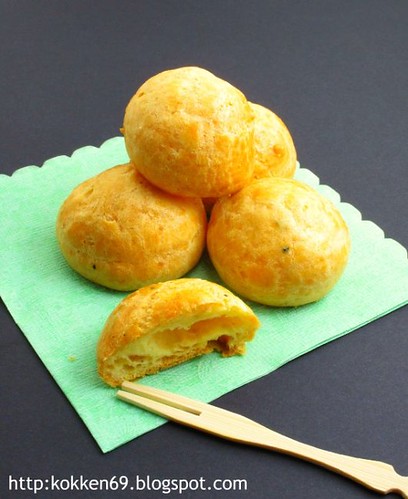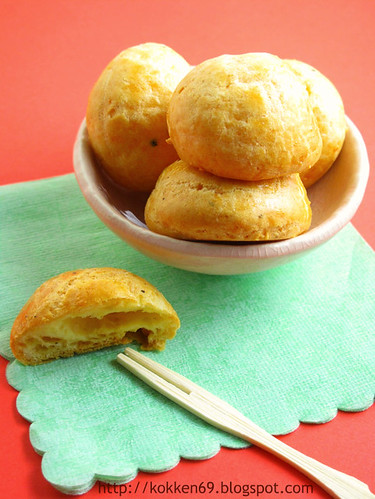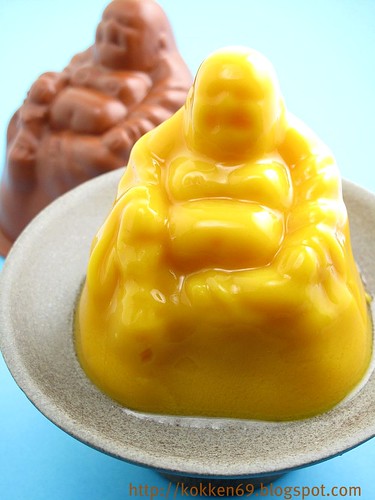
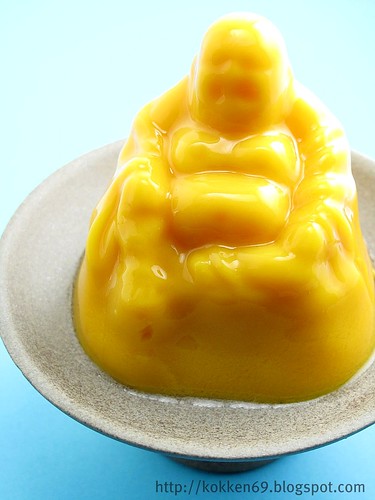
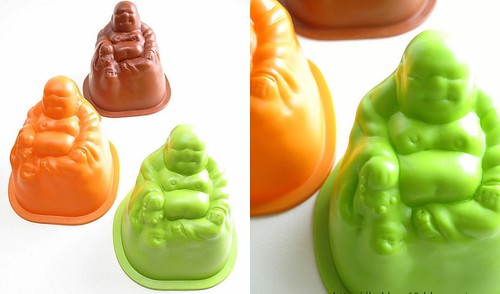
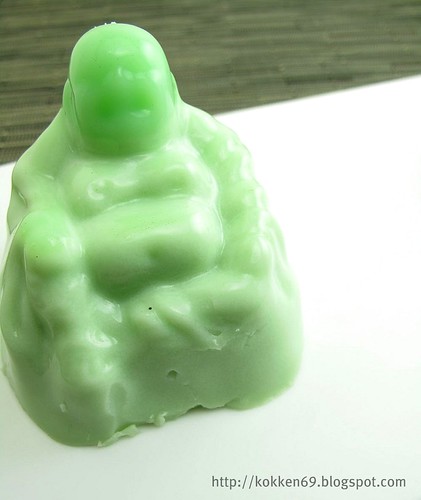
Cooking is fun and I admit very often, I don't cook to eat but to play in the kitchen. This dessert will elicit boisterous guffaws - even when it does not turn out right as demonstrated by my first attempt to use the mold with a Pandan Pana Cotta recipe. The green Pandan juice gives the Pana Cotta a nice tender jade green appearance but as this was set with gelatine, it was too soft to give definition to the facial details. I was disappointed with the photo and had sent it to L to see if he could still recognise this green glob. 'Looks like a laughing Buddha to me' - he had messaged back. I felt a little better and told him what I was doing. He messaged back a Rolling On The Floor Laughing emoticon followed by, 'I thought you want to buy a Jade Buddha!'....
I had bought these molds at the beginning of this year from my favourite quintessential curio lifestyle store, Charles & Marie. These Il Buddhino pudding molds are shaped like a laughing Buddha. I am a Buddhist and have always loved the Buddha motif. The Buddha is possibly one of the most embraced religious figure/motif in the world by Buddhists and non-buddhists alike. I don't know how and when it started but the Buddha figure seems to have become a favourite element in interior design and lifestyle products. It could have started with The Buddha Bar Restaurant in Paris - the opulent interior design, the tragically cool music... the soothing sense of chill (out).
While I had looked forward to receive these molds, I had let them sit in my over-flowing kitchen drawer for more than 6 months after I received them. The Pandan Panna Cotta was what I really wanted to make with them - for, exactly as L had commented, it would have looked like a Jade sculpture. But alas, it did not turn out well. Also it will not photograph well because the faint facial imprints on the smooth reflective pudding would have been almost indiscernible on a light coloured finish. Hence my decision to work with a pudding with a darker colour. For my second attempt, I made a Mango Pudding with dark orange Pakistani Mangoes and set it with Agar powder instead of gelatine - to give it more structure and form.
I am quite pleased with the way the Mango Pudding turned out but am still partial towards the Jade Green finish. As for eating it....I have so far always started from the base and still feel wierd about digging my spoon into the head... अमिताभ,Amitābhaḥ.
Recipe for Mango Pudding:
Mango Puree 125g
Fresh Cream 1 Tbsp
Milk 1/4 cup
Water 1/2 cup
Agar Powder 1/4 tsp
Sugar 1 tbsp ( can be adjusted depending on Mango's sweetness)
Method:
1. Gradually add Fresh Cream into Mango Puree, stirring constantly to ensure good mixing.
2. Add Milk gradually to (1) with constant stirring.
3. Boild water with Agar Powder and Sugar until dissolved. Reduce heat and simmer mixture for 3 mins. Cool to luke warm and add gradually to (2).
4. Pour (3) into Buddha mold and set in the fridge.

